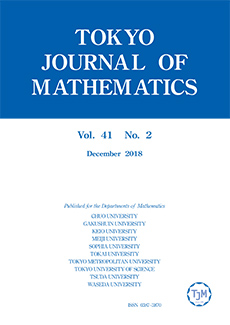Abstract
In this paper, we consider the partial survival and extinction of species in model governed by the following discrete model of nonautonomous Lotka-Volterra type: \[ \left\{ \begin{array}{@{}ll} N_i(p+1) = N_i(p) \exp\{ c_i(p)-\displaystyle \sum_{j=1}^n \displaystyle \sum_{l=0}^m a_{ij}^l(p) N_j(p-k_l) \}\,, \quad p \geq 0\,, \quad 1 \leq i \leq n\,, \\ N_i(p) = N_{ip} \geq 0\,, \quad p \leq 0\,, \quad \mbox{and} \quad N_{i0}>0\,, \quad 1 \leq i \leq n\,, \\ \end{array} \right. \] where each $ c_i(p) $ and $ a_{ij}^l(p) $ are bounded for $ p \geq 0 $ and \[ \displaystyle \sum_{l=0}^m (\displaystyle \inf_{p \geq 0} a_{ii}^l(p))>0\,,\quad \ a_{ij}^l(p) \geq 0\,, \quad i \leq j \leq n\,, \quad 1 \leq i \leq n\,, \quad k_l \geq 0\,, \quad 0 \leq l \leq m\,. \] To the above discrete system, we extend results on the {\it principle of competitive exclusion} in nonautonomous Lotka-Volterra differential systems which has been established by Shair Ahmad (1999, {\it Proceedings of the American Mathematical Society} {\bf 127}, 2905--2910), that is, if the coefficients satisfy certain inequalities, then any solution with positive components at some point will have all of its last $ n-1 $ components tend to zero, while the first one will stabilize at a certain solution of a discrete logistic equation.
Citation
Yoshiaki MUROYA. "Partial Survival and Extinction of Species in Discrete Nonautonomous Lotka-Volterra Systems." Tokyo J. Math. 28 (1) 189 - 200, June 2005. https://doi.org/10.3836/tjm/1244208288
Information





